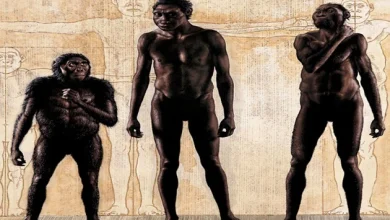How Africans use brooms as a traditional lie detector

The broom, a common cleaning tool? No! In several African countries, and for generations, it is also used to disentangle the truth from the lairs. And at this little game, this household utensil, which, moreover, is also a strong social symbol, seems infallible.
Forget polygraph and other physiological techniques! To effectively flush out tricksters and other patented liars, there is absolutely nothing better than using a good old broom, and in Africa, this is known!
The method – if it may vary slightly depending on the country or person – is quite simple. For example, assuming there are several suspects, you have to take them individually, make them swear on two brooms, then you have to pass the brooms around the neck of each person simultaneously.
However, for the innocent, nothing happens, but on the turn of the culprit, the vise inevitably tightens on his or her neck and loosens only when the fault is confessed. Most often, the culprit receives punishment according to local rules.
“This is simply a rite that makes it possible to determine the perpetrator of a theft or a lie. By his oath, any person subjected to this rite proclaims (and therefore, accepts) that misfortune befalls him if he is indeed guilty,” explained René Allou Kouamé, titular professor of history at The Felix Houphouët-Boigny University of Abidjan and a specialist in the Akan Peoples, which are found in Côte d’ivoire, Benin, Ghana, and Togo.
A simple method? Not that much, after all, as a former practitioner of this rite explained. At 47, Amoin is now “retired”, but for almost twenty years, it was “brilliantly”, she says, that she had unearthed a number of indecisive liars.
Her fame was such that she went far beyond the walls of her village, located in the east of Côte d’Ivoire, on the border with Ghana, where her late mother – depositary of the rite – originated. An intriguing profession that she abandoned in favor of her conversion to Christianity in 2014.
“Whether you accept it or not, it is a real and absolutely effective practice. As far as I’m concerned, I don’t remember that the verdict was once wrong,” said Amoin. Asked about the effectiveness of this rite, Professor René Allou Kouamé said he knew nothing, but hinted that “Africa is a vast field of possibilities”. As for Amoin, efficiency “depends on the spirits it appeals to”.

“I refuse to go into details, but it was with spirits that I composed to catch the culprit. But the fact is that this practice is not only used to catch thieves or liars. It can also be a way to take possession of the person who willingly lends himself to it,” she added.

Slightly more “rational” explanations exist, however. And they would be of the same order as those explaining the formidable efficiency – in its time – of other ordeals, this means of judicial evidence of a religious nature dating back to the time of the Pharaohs, but which was widespread in Europe in the Middle Ages.
The suspects were lined up and subjected to tests to separate them. In the ordeal of bread or cheese, for example, the one whose piece of broom remained literally “through his throat” was convicted. In bilateral ordeals, mainly “judicial fights”, the party succumbing to the duel to death will be found guilty (and incidentally deceased).
The effectiveness of the practice, according to historians and anthropologists of the law, was based on several mechanisms.
In the first place, the psychological aspect “of the person who willingly lends himself to it”, according to Amoin’s expression, is decisive. The liar will often have a dry throat. From then on, he will be more inclined to choke while trying to swallow the piece of bread.
In the judicial duel, David will be able to make only a bite of Goliath, for he will be of the integrity of the cause he defends, while Goliath, despite his size, will not stand straight in his giant boots. In addition, this means of proof could also be used with more or less flexibility, very often to confirm the intimate conviction that the judge had already forged.
However, according to Amoin, and as some videos available on the web tend to demonstrate, impostors exist. Besides, no one is immune from an “error in judgment”.
A strong social symbol
In Africa, a whole symbolism and beliefs, diverse and sometimes surprising, surround the broom. So hitting someone with a broom can draw bad luck or drive them crazy. Likewise, sweeping at night means running the risk, in the best of cases, of chasing happiness out of one’s house, at worst, of attracting evil spirits or sorcerers into one’s home.
In terms of symbolism, the broom, assembly of twigs, symbolizes unity. Taken individually, the twig bends and does not take long to break under pressure. But together, the twigs bend, hit, but don’t break. It is known that unity is strength.
On the other hand, the broom also has the symbolism of purification of spiritual cleansing. There is perhaps nothing surprising in the end that a broom, in this case, the “Citizen Broom”, was used in October 2014 to chase Blaise Compaoré, in power for 27 years in Burkina Faso.




